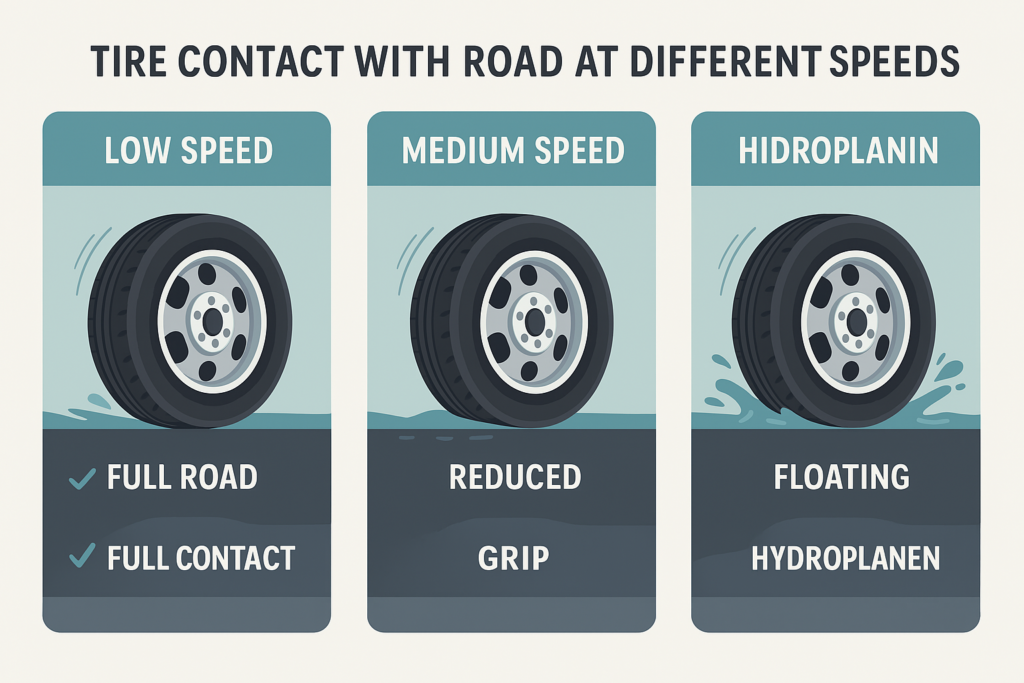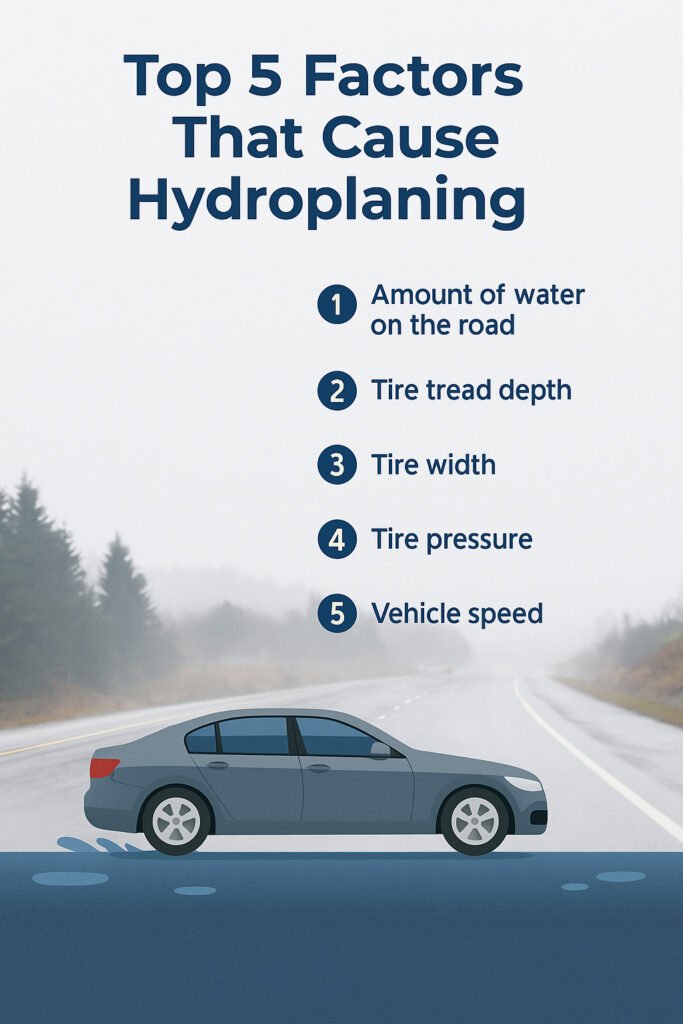What Nova Scotia Drivers Should Know About Hydroplaning and How to Prevent It
Driving on wet roads in Nova Scotia can turn dangerous fast — especially when your tires lose contact with the road. This is called hydroplaning, and it can happen in just a few seconds if you’re not prepared. You lose control of steering and braking, often without warning.
In this post, we’ll break down what causes hydroplaning, why it’s a serious risk in our region, and what you can do to avoid it. These tips are based on real defensive driving techniques that every Nova Scotia driver should practice.
Table of Contents
- What Is Hydroplaning?
- How Speed Affects Hydroplaning
- Top Factors That Contribute to Hydroplaning
- How to Prevent Hydroplaning
- What to Do If Your Car Starts to Hydroplane
- Hydroplaning Is Common in Nova Scotia — But Preventable
- Learn More About Defensive Driving
- Additional Resources
- Final Thought
What Is Hydroplaning?
Hydroplaning occurs when a layer of water builds up between your vehicle’s tires and the road. Instead of gripping the pavement, your tires glide on top of the water — like skates on ice — leaving you with little to no control.
Even a small amount of water (less than 1 cm) can lead to hydroplaning if you’re driving too fast or your tires aren’t in good shape. It happens often during spring and fall rains in Nova Scotia, especially on highways, rural roads, or in areas with poor drainage.

How Speed Affects Hydroplaning
Speed is one of the biggest factors in hydroplaning. At low speeds, your tires maintain full contact with the road. As you speed up, water pressure builds under your tires and starts to reduce traction. At higher speeds, your tires can lift entirely off the road and begin to slide across the water’s surface.
Hydroplaning is most likely to occur at speeds over 80 km/h, especially in areas with puddles, wet pavement, or during heavy rain. That’s why slowing down is one of the simplest and most effective ways to prevent it.
Top Factors That Contribute to Hydroplaning
There are several conditions that make hydroplaning more likely. As a defensive driver, you should always watch for these:
- Water depth: The more water on the road, the greater the risk.
- Tire tread depth: Bald or worn-out tires can’t push water away effectively.
- Tire width: Wider tires may increase hydroplaning risk by covering more water surface area.
- Tire pressure: Underinflated tires lose traction faster in wet conditions.
- Your speed: Higher speeds reduce tire-to-road contact and increase the chance of sliding.

How to Prevent Hydroplaning
Here are some practical steps to avoid hydroplaning and stay in control:
- Slow down when roads are wet. Reduce speed, especially in heavy rain or near puddles.
- Avoid standing water. Steer around large puddles and low-lying areas when possible.
- Check your tires regularly. Maintain good tread depth and proper inflation.
- Don’t use cruise control in the rain. You need to be able to respond quickly if you start to skid.
- Steer and brake gently. Sudden movements can worsen the slide. Keep a steady grip and ease off the gas.
What to Do If Your Car Starts to Hydroplane
If you feel your car begin to hydroplane:
- Ease off the accelerator immediately. Do not brake hard.
- Steer in the direction you want to go. Keep your hands steady on the wheel.
- Wait for your tires to regain contact with the road. Then gradually return to normal driving.
The most important thing? Stay calm. Overcorrecting or slamming the brakes can make the situation worse.
Hydroplaning Is Common in Nova Scotia — But Preventable
With Nova Scotia’s frequent rain and coastal climate, hydroplaning is something every driver should be prepared for. The good news is that with the right habits, it’s preventable.
Slowing down, maintaining your tires, and driving defensively all go a long way toward keeping you safe. These aren’t advanced skills — they’re smart, everyday driving habits that apply whether you’re in Halifax, Truro, or on a rural backroad.
Learn More About Defensive Driving
If you’re looking to sharpen your awareness and driving skills beyond just avoiding hydroplaning, our Defensive Driving Course in Halifax is built for Nova Scotia drivers and road conditions.
Additional Resources
For more official safety info, visit the Nova Scotia Road Safety page. They offer tips on seasonal driving, accident prevention, and road rules.
Final Thought
Hydroplaning might only last a few seconds — but those seconds matter. By understanding what causes it and how to respond, you can stay in control and avoid unnecessary accidents.
Rain or shine, smart driving makes Nova Scotia roads safer for everyone.
The information provided on this post is for general informational purposes only and is not intended to serve as professional advice or guidance. While Artin Driving School strives to ensure the accuracy and timeliness of the information shared, Artin Driving School makes no guarantees, warranties, or representations regarding the completeness, reliability, or suitability of any content posted.





